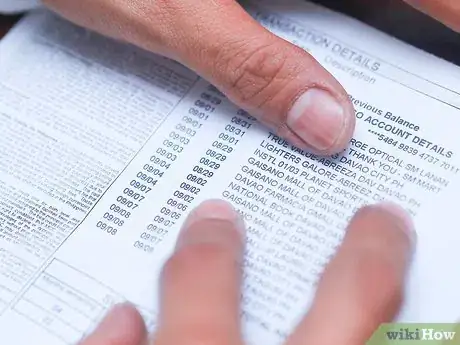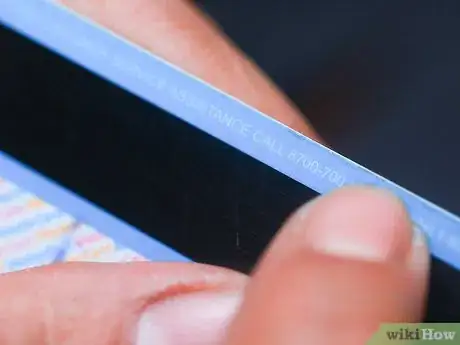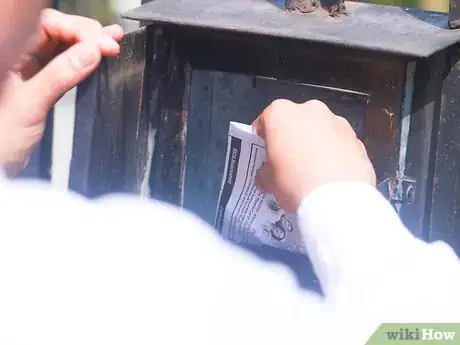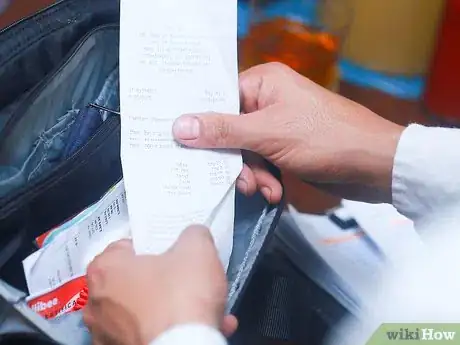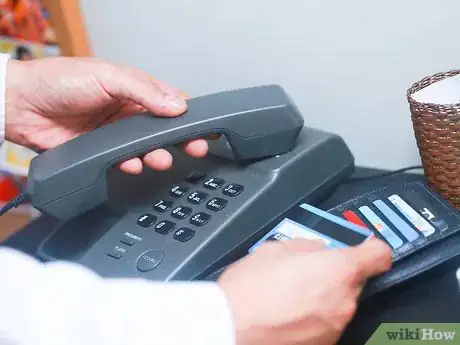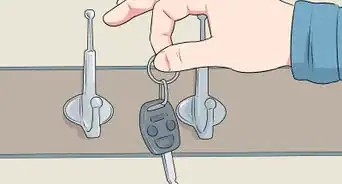This article was co-authored by Clinton M. Sandvick, JD, PhD. Clinton M. Sandvick worked as a civil litigator in California for over 7 years. He received his JD from the University of Wisconsin-Madison in 1998 and his PhD in American History from the University of Oregon in 2013.
There are 8 references cited in this article, which can be found at the bottom of the page.
This article has been viewed 8,952 times.
You might need to dispute a credit card charge if you find purchases on your credit card statement for items you personally did not buy or authorize. Further, in some instances, a vendor may have charged you more than you agreed to pay for a particular item. Although these errors can be annoying, there are steps you can take to dispute a credit card purchase.
Steps
Reporting an Unauthorized Credit Card Charge
-
1Identify the unauthorized charges. An unauthorized charge is any purchase on your credit card that you did not make or authorize.[1] Take out your credit card statement and identify the dates, amount, and merchant of any unauthorized charges. You will need this information to report to your credit card company.
- If your credit card statement does not arrive on time, call your credit card company.[2]
-
2Do not delay. The federal Fair Credit Billing Act states that consumers must report unauthorized charges to their credit card issuer within 60 days that the statement containing the error was mailed. If you learn of the unauthorized purchase sooner, however, you should report the error as soon as possible.[3]
- One way to detect fraud early is to enroll in your credit card's bank website.[4] You can then monitor charges at your own convenience without waiting for a monthly statement.
-
3Call the phone number on the back of the card. You should immediately report any unauthorized charges as soon as you discover it. Additionally, you may also want to cancel your card and ask the credit card company to issue a new one.[5]
-
4Follow up in writing. Although you should certainly call as soon as possible, you should also follow up with your credit card company in writing. Be sure to send the letter certified mail, return receipt requested.[6] Send the letter to the department authorized to handle billing disputes, which should be listed on your most recent credit card statement.
- The letter should include:[7]
- a copy of the billing statement with the questionable charge highlighted
- your name
- your account number
- an explanation of why you believe the charge is incorrect
- The Federal Trade Commission has a sample letter available at their website for you to use. Revise it to fit your circumstances.
- Keep a copy of all correspondence for your records.[8]
- The letter should include:[7]
-
5Understand your liability. Under the Fair Credit Billing Act, consumers are not liable for more than $50.00 in fraudulent charges. Furthermore, major credit card companies like Visa, MasterCard, Discover, and American Express often have zero liability policies, which means that you will not be held liable for any portion of the fraudulent charges.[9]
-
6Wait for a response. Once you have disputed a charge, the credit card company will credit your account for an amount equal to the disputed charge. This means that any payment you make on the card will not include the disputed amount.
- The credit card company must acknowledge receiving your dispute within 30 days.[10] If you do not hear within 30 days, call the credit card company again.
-
7
-
8Receive a decision. The credit card company must inform you in writing of the results of its investigation. If the company agrees the charge was a mistake, then your account will be credited and all finance charges, late fees, and other charges must be removed.[13]
- If the credit card company finds that some or all of the disputed charge was legitimate, then you can request whatever documents the card company has proving that you really owe the money. You have 10 days to write the credit card company and telling them that you will not pay the disputed amount.[14]
- Once you refuse to pay, the credit card company has the choice to bring a collections action to recover the amount. Also, the company may report you to a credit reporting company as delinquent, though it must also state that you don't agree that you owe money.[15]
Reporting a Merchant Error
-
1Identify the type of complaint. Be clear about what your grievance is:
- Goods not received i.e. The merchant charged you for an item you did not purchase
- Overcharge i.e. charged you more for an item than you agreed to
- You can also dispute a charge if you have a complaint about the quality of goods or services that you received. Technically, this is not a “billing complaint.”[16] Nevertheless, you may request a “charge back” from the credit card company. A “chargeback” is effectively a refund.
- To request a chargeback for goods or services, you must have spent more than $50 and the purchase must have been in your home state or within 100 miles of your home.[17]
-
2
-
3Contact the merchant's customer support. After you realize that the charge has been caused by a merchant's error, you can contact the merchant immediately to inform them of the mistake.[18] Although you are not required to contact the merchant, merchants will often address your complaint in a satisfactory manner.[19] . Call them/ email them or post a request ticket on their website with as much information as possible in the order of the time it occurred. Remember, you want to build a clear case of how you did everything in your capacity to communicate the type and quality of service you requested but your expectation was not met. Keep a record of the complaint number or ID in a safe place. Include the following in your complain:
- Date and time of the purchase
- Order number
- Amount and currency
- Date, time, quality and quantity of the product and service received if any
- Date, time, quality and quantity of the product and service you expected
- Any previous effort you made to get the quality, type, product or service you expected
- How you want them to resolve the issue e.g. get a full refund or ship you the item again or refund you only for the faulty item or give you a gift coupon
- Your contact information for them to get back to you
- Thank them for their anticipated support
-
4Follow up with the business. Any established business will tell you exactly how long you need to wait for a resolution. Wait patiently till that time has passed. In the meantime, make sure you are available at the phone number/ email address you mentioned. If they ask for more information, look it up from your previous steps or tell them you don’t have it. Call them again if they don't respond in 48 hours otherwise with your complaint ID pulled up.
-
5Contact your credit card company. If you are unable to reach an immediate resolution with the merchant, then you should immediately contact the credit card issuer by calling the phone number on the back of the card or on your billing statement.[20]
- Don't wait too long for the merchant to issue a refund. If the refund isn't immediate, then move on to your credit card company.
- Once contacted, your credit card company will contact the merchant on your behalf in order to reach a resolution.[21]
-
6Follow up with a letter. You should follow up your phone call with the credit card company by writing a letter. If you are challenging the quality of goods or services, then you should make sure that your letter includes:
- the request for a chargeback
- your account number
- the specific amount on the statement that you decline to pay
- the steps you have already taken to try and settle the dispute
-
7Approach a consumer rights organization. If a dispute with the credit card company is past due, normally after 60 days, approach a consumer rights organization. In USA, for example, Better Business Bureau is an organization that holds businesses accountable. Sign up and post a ticket with the same information you gave the business. You may have a time window to do this as well, longer than filing a dispute with the credit card company.
Warnings
- Do not get rude or use explicit language with customer support[22]⧼thumbs_response⧽
References
- ↑ http://www.consumer-action.org/downloads/english/Chase_CC_Fraud_Leaders.pdf
- ↑ http://www.consumer-action.org/downloads/english/Chase_CC_Fraud_Leaders.pdf
- ↑ http://www.consumer-action.org/downloads/english/Chase_CC_Fraud_Leaders.pdf
- ↑ http://www.consumer-action.org/downloads/english/Chase_CC_Fraud_Leaders.pdf
- ↑ http://www.bankrate.com/finance/credit-cards/7-tips-for-winning-a-credit-card-dispute-2.aspx
- ↑ http://www.bankrate.com/finance/credit-cards/7-tips-for-winning-a-credit-card-dispute-4.aspx
- ↑ http://www.consumer-action.org/downloads/english/Chase_CC_Fraud_Leaders.pdf
- ↑ http://www.consumer.ftc.gov/articles/0219-disputing-credit-card-charges
- ↑ http://www.consumer-action.org/downloads/english/Chase_CC_Fraud_Leaders.pdf
- ↑ https://www.creditcardinsider.com/insider/dispute-fraudulent-credit-card-charge/
- ↑ http://www.bankrate.com/finance/credit-cards/7-tips-for-winning-a-credit-card-dispute-4.aspx
- ↑ http://www.bankrate.com/finance/credit-cards/7-tips-for-winning-a-credit-card-dispute-5.aspx
- ↑ http://www.consumer.ftc.gov/articles/0219-disputing-credit-card-charges
- ↑ http://www.consumer.ftc.gov/articles/0219-disputing-credit-card-charges
- ↑ http://www.consumer.ftc.gov/articles/0219-disputing-credit-card-charges
- ↑ http://www.consumer.ftc.gov/articles/0219-disputing-credit-card-charges
- ↑ http://www.consumer.ftc.gov/articles/0219-disputing-credit-card-charges
- ↑ https://www.creditcardinsider.com/insider/dispute-fraudulent-credit-card-charge/
- ↑ http://www.bankrate.com/finance/credit-cards/7-tips-for-winning-a-credit-card-dispute-3.aspx
- ↑ https://www.creditcardinsider.com/insider/dispute-fraudulent-credit-card-charge/
- ↑ https://www.creditcardinsider.com/insider/dispute-fraudulent-credit-card-charge/
- ↑ http://www.bankrate.com/finance/credit-cards/7-tips-for-winning-a-credit-card-dispute-6.aspx
About this article
To dispute a credit card charge, start by identifying the date, amount, and merchant of the unauthorized charge, and then immediately call your credit card company to report the error. You can also often contact your company online as well. Next, follow up by sending a letter through certified mail that outlines the details of the disputed charge if you spoke to a representative over the phone. If the company agrees the charge was a mistake, your account will be credited and all associated fees should be removed. For more advice from our Legal reviewer, including what to do if your company thinks the charge is legitimate, read on!
